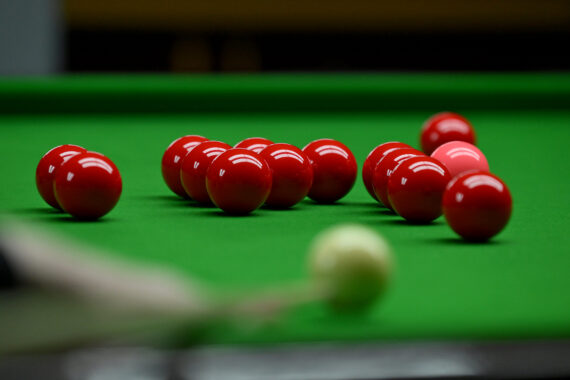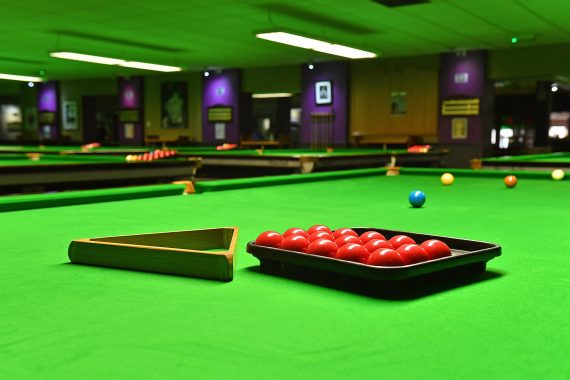An Introduction to World Snooker Rankings
During recent weeks, we have seen as many as three players ranked as snooker’s world number one, with Mark Selby having been replaced by Ding Junhui, who was then himself usurped by Neil Robertson after just a single week.
As well as the fact that there have been so many changes in quick succession, a first for snooker, it is perhaps the manner of these changes that, on the face of it at least, has been so striking.
In particular, that Ding Junhui was able to become world number one for the first time, not following one of his five ranking event triumphs last season, but following six more difficult months, culminating in a shock last 32 defeat to James Cahill at the Coral UK Championship.
Then, as was perhaps even more surprising to the uninitiated, Ding was to be replaced at top spot by Australia’s Neil Robertson after the Lisbon Open, despite Robertson not having so much as set foot in Portugal during the tournament.
So how did those two changes happen? Given the various, often repeat questions that I am asked about snooker’s official world rankings, it is important to remind ourselves how snooker’s ranking system operates.
The Basics
Put simply, the world ranking of each main tour player is determined by counting all of the prize money that he (or she), has won during the preceding two-year period.
As ever however, there are a number of important qualifications to be made beyond that sentence.
Counting Events
The first is that only prize money earned from events carrying ‘ranking’ status is included.
The includes both so-called ‘full’ ranking events, as well as ‘minor’ ranking such as those forming the Kreativ Dental Clinic European Tour and Asian Tour series.
Prize money won from invitational events therefore, such as the Dafabet Masters and Dafabet Champion of Champions, is not included.
Typically, automatic entry into such invitational events is not open to all main tour players, hence the prize money earned from them does not count towards a player’s ranking.
Maximum/High break prizes
One common question asked in relation to the ranking system is as to whether money earned from claiming either a tournament high break prize, or in the case of a 147, the maximum break prize, is included within a player’s ranking.
The answer, in both cases is no – only the prize money earned by a player as a result of reaching a particular round of a tournament counts towards the ranking list.
Players In First Year of Two Year Card
For the avoidance of doubt, it is also important to note that current main tour players, who are on the first year of a two-year tour card, started this season with a total of zero counting prize money. This is regardless of whether they were on tour during the previous season.
For example, Scott Donaldson competed on tour and earned prize money towards his ranking during the 2012/13 and 2013/14 seasons, however his total was reset to zero at the start of the 2014/15 season, due to him beginning a fresh two-year tour card earned by his performances on the 2013/14 European Tour.
Rolling Rankings
Subject to those qualifications, all main tour players, plus the three invitational tour cards for the 2014/15 season, are ranked in order of total prize money earned during the previous two years immediately up to that point.
As new events take place, the money earned at those events ‘replaces’ money earned more than two years previously, as those older events effectively ‘drop’ off the ranking list. It is this manner of money being continually replaced and updated that has led to the ranking list being described as a ‘rolling’ system.
For example, at the start of the 2014/15 season, the rankings were made up of all prize money won during the previous two years, eg from June 2012 to June 2014.
As events were staged last summer such as the Wuxi Classic and Australian Goldfields Open, the prize money earned at the corresponding events in 2012, the money that a player can be said to be ‘defending’ at the current event, was then replaced by that earned from the current event.
The Effects
So to return to the original question of why have we seen so many changes recently, firstly, how was Ding Junhui able to overhaul Mark Selby to claim the number one ranking after the Coral UK Championship?
The answer is because following his victory at the UK Championship two years previously, Mark came into this year’s tournament ‘defending’ the £125,000 won in 2012. Due to his second round exit to David Morris therefore, a result that earned him just £3,000 in 2014, Mark was to effectively lose £122,000 from his world ranking.
Ding Junhui on the other hand was able to earn £9,000 following his run to the last 32, a gain of £1,500 when off-set against the £7,500 that was to be removed from his total from the 2012 tournament.
Overall therefore, there was to be a £123,500 swing from Selby to Ding, which was enough to see Ding become number one, for one week at least.
This was because a week later, the staging of the Kreativ Dental Clinic Lisbon Open was to correspond with the 2012 Ravenscraig Open, which was similarly held after the UK Championship two years ago.
With neither Ding, nor Robertson having entered Lisbon, neither player was in a position to add to their tally in 2014, but crucially Ding, having won in Ravenscraig in 2012, was to lose £9,384 from his tally, compared to nothing for Robertson who did not play in Scotland.
With the gap between the two players standing at just £2,318 prior to Lisbon, this swing in favour of the Australian was enough to see him move back above Ding, despite not playing in Portugal.
In the coming days I will continue my explanation of snooker’s ranking system, by considering the subject of seedings lists and terminology that you may have heard professionals talk about, such as ‘provisional’ rankings…



